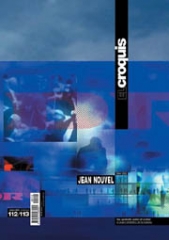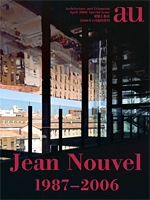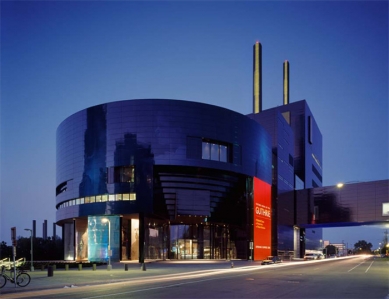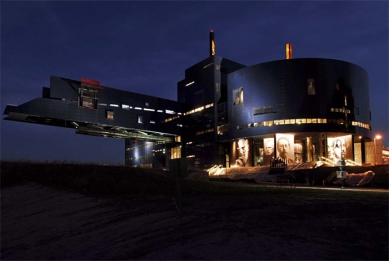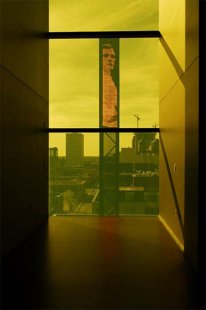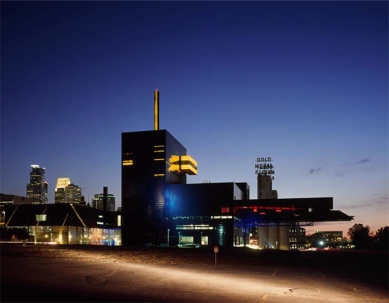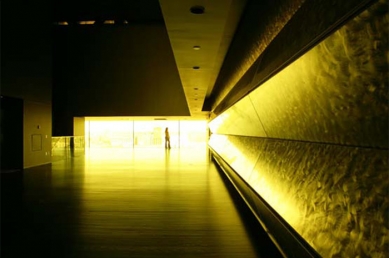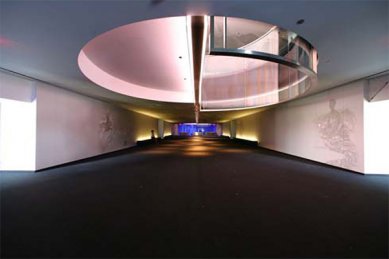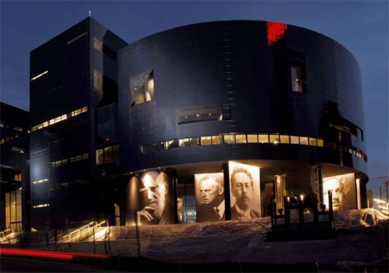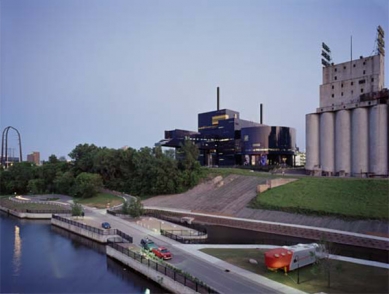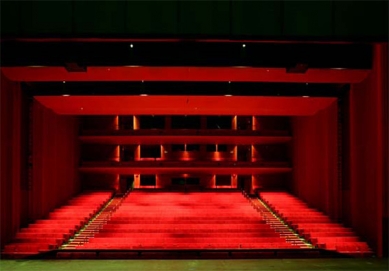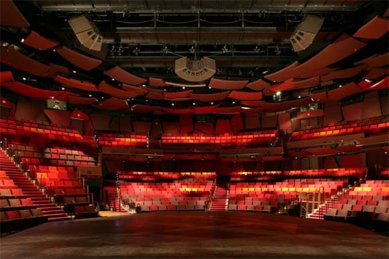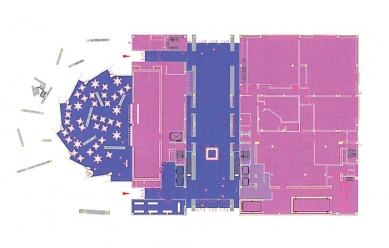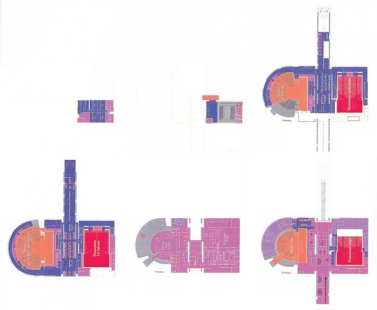
Guthrie Theater

"If any building deserves the nickname sexy-ugly, it is this one. It is polished yet clumsy. The refined composition of geometric shapes cannot be less photogenic, especially from the outside. The design has quite naturally managed to fit into the context of industrial buildings along the river and to appear contemporary. The fact that the building acknowledges its imperfection, in a French manner, does not spare it from feelings of futility."
Christopher Hawthorne, LA Times
The Guthrie Theater is Nouvel's first realization on the American continent. The new building replaced an old and inadequate theater stage from 1963 designed by Ralph Rapson, which stood in the grounds of the Walker Art Center. However, with its demolition, set to begin later this summer, preservationists disagree. The new theater is located on the banks of the Mississippi River, between old mills and grain silos. An elevated foyer features a sixty-meter cantilever (named “infinite bridge”) offering breathtaking views of the riverbed.
The theater has adopted the shapes and proportions of the surrounding industrial buildings. On a pedestal adorned with eight giant photographs of actors and playwrights associated with Guthrie lies a composition of geometric shapes wrapped in dark blue steel panels evoking the magic of dusk (or as Nouvel insists on calling it “the moment between dog and wolf”). Behind the dark blue shiny façade and yellow windows lie three theater halls with 1100, 700, and 250 seats. Storage and workshops are located in the opposite parking structure, allowing all sets to be transported to the theater via a bridge across the street. Visitors can wonderfully observe this entire operation from the glass foyer. From the ground-floor entrance, steep escalators lead to the main foyer on the fourth floor. Right above it is another foyer with a restaurant. The large asymmetrical hall is dominated by seats and acoustic panels in autumn colors. The smaller stages, on the other hand, are strictly rectangular and lined with red velvet. Another elevated foyer on the 9th floor features yellow glass walls. Through them, a view of the entire city skyline unfolds.
Thanks to his experience in designing theater buildings, Nouvel now has a very strong position. Although local critics received his first American building with hesitation as “brash yet welcoming,” the opening of the Guthrie Theater has become this year's cultural highlight of Minneapolis.
The theater has adopted the shapes and proportions of the surrounding industrial buildings. On a pedestal adorned with eight giant photographs of actors and playwrights associated with Guthrie lies a composition of geometric shapes wrapped in dark blue steel panels evoking the magic of dusk (or as Nouvel insists on calling it “the moment between dog and wolf”). Behind the dark blue shiny façade and yellow windows lie three theater halls with 1100, 700, and 250 seats. Storage and workshops are located in the opposite parking structure, allowing all sets to be transported to the theater via a bridge across the street. Visitors can wonderfully observe this entire operation from the glass foyer. From the ground-floor entrance, steep escalators lead to the main foyer on the fourth floor. Right above it is another foyer with a restaurant. The large asymmetrical hall is dominated by seats and acoustic panels in autumn colors. The smaller stages, on the other hand, are strictly rectangular and lined with red velvet. Another elevated foyer on the 9th floor features yellow glass walls. Through them, a view of the entire city skyline unfolds.
Thanks to his experience in designing theater buildings, Nouvel now has a very strong position. Although local critics received his first American building with hesitation as “brash yet welcoming,” the opening of the Guthrie Theater has become this year's cultural highlight of Minneapolis.
The English translation is powered by AI tool. Switch to Czech to view the original text source.
2 comments
add comment
Subject
Author
Date
plány
koko
18.07.06 04:13
Zážitek
SM
25.10.20 12:50
show all comments


